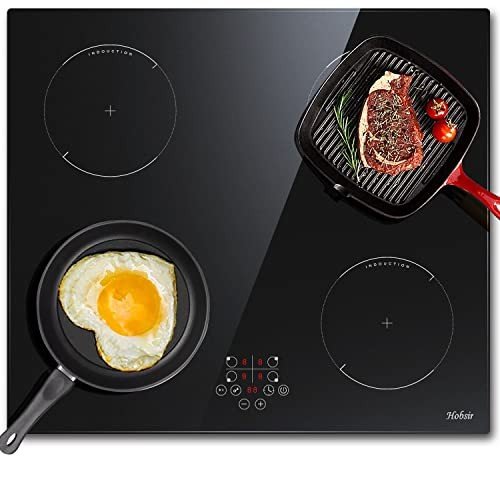10 Misconceptions That Your Boss May Have About Electric Oven & Hob
Understanding Electric Ovens and Hobs: Your Guide to Cooking Efficiency
Electric ovens and hobs have transformed the cooking landscape, providing home cooks and professional chefs a trusted, efficient, and constant method to prepare meals. As technological developments continue to influence appliance style, the performance and performance of electric cooking systems have considerably enhanced. This article digs into the features, benefits, and factors to consider surrounding electric ovens and hobs, providing a detailed summary for anyone wanting to upgrade or purchase kitchen appliances.
What Are Electric Ovens and Hobs?
Electric ovens are kitchen appliances created for baking, broiling, roasting, and other cooking methods that need controlled heat. They use electric coils or convected heat elements to create and maintain the wanted temperature. Electric hobs, often referred to as electric cooktops, are flat surface areas with heating components that enable pots and pans to be placed straight on them for cooking.
Table 1: Key Differences Between Electric Ovens and Hobs
Function
Electric Oven
Electric Hob
Main Function
Baking, roasting, broiling
Heating pots and pans for cooking
Heating Method
Electric coils or glowing elements
Induction, radiant, or ceramic components
Operation Temperature Range
Up to 500 ° F (260 ° C
) Varies by style; generally lower than ovens
Cooking Styles
Versatile; ideal for different dishes
Primarily stovetop cooking techniques
Area Requirement
Normally built into cabinets
Frequently standalone or built-in choices
Energy Consumption
Typically greater, depending on use
More energy-efficient with induction hobs
Advantages of Electric Ovens and Hobs
When thinking about electric ovens and hobs, it's vital to understand their various benefits, which can boost the cooking experience.
1. Consistent Heating
Electric ovens and hobs provide even and consistent heating, which is vital for numerous cooking strategies. This guarantees that dishes cook uniformly, decreasing the chances of overcooking or undercooking certain areas of food.
2. Safety Features
Modern electric ovens and hobs come equipped with various safety features to avoid accidents in the kitchen. For example, lots of models consist of automated shut-off functions, hot surface indications, and kid security locks.
3. Easy to Use
Unlike gas designs, electric ovens and hobs are straightforward and user-friendly. The simplicity of turning on a dial or pushing a button makes them accessible for cooks of all ability levels.
4. Versatile Cooking Options
With different cooking techniques possible, from baking to simmering, electric models are versatile enough to accommodate a broad range of culinary styles and choices.
5. Cleaning up and Maintenance
Electric ovens usually feature smooth surfaces that are easy to tidy, especially designs with self-cleaning abilities. Hobs, particularly induction types, also provide a flat surface area that is easy to wipe down, making upkeep a breeze.
Popular Types of Electric Ovens:
- Conventional Ovens: Ideal for traditional baking and roasting.
- Convection Ovens: Circulate hot air for faster, even cooking.
- Microwave Ovens: Use electromagnetic radiation for fast heating and cooking.
- Toaster Ovens: Small counter top ovens for quick jobs.
Popular Types of Electric Hobs:
- Induction Hobs: Utilize magnetic fields for quick heating and energy efficiency.
- Radiant Hobs: Feature electric coils that warm up to cook food.
- Ceramic Hobs: Offer a smooth surface area and are simple to clean.
Factors To Consider When Choosing Electric Ovens and Hobs
While electric ovens and hobs provide various advantages, numerous factors need to be taken into consideration to ensure the best fit for your kitchen:
1. Area Availability
Assess the offered kitchen area before purchasing. Figure out whether you need a built-in model or a freestanding device, and measure the measurements carefully to make sure a good fit.
2. Cooking Needs
Identify your cooking habits and choices. If Ovens & Hobs bake big amounts or cook complex meals, think about an oven with innovative features like convection settings or multiple racks.
3. Energy Efficiency
Search for energy-efficient designs that can assist in saving on utility costs gradually. Energy Star-rated appliances can be particularly economical.
4. Budget
Set a realistic budget that accounts for both the initial purchase and continuous operating expense. In addition to the appliance cost, aspect in installation and possible repair work.
5. Extra Features
Consider whether features like wise technology, programmable settings, or steam cooking options are very important for your cooking style.
Frequently asked question Section
Q: How do I clean my electric oven?
A: Most electric ovens come with self-cleaning options. If your model does not have this feature, permit the oven to cool, then wipe down surface areas with a mixture of baking soda and water or an industrial oven cleaner.
Q: Is induction cooking safe?
A: Yes, induction cooking is thought about safe as the heating component just activates when compatible cookware is in contact with it, decreasing the risk of burns.
Q: How long does it consider an electric oven to pre-heat?
A: Preheating times vary based on the oven's design and temperature level setting however generally vary from 10 to 15 minutes.
Q: Can I utilize any pots and pans on an induction hob?
A: No, only ferromagnetic pots and pans works with induction hobs. Inspect for induction compatibility before usage to avoid damage.
Q: What is the difference in between a stove and a traditional electric oven?
A: A convection oven includes a fan that distributes hot air, making sure even cooking and decreased cooking times compared to a standard electric oven, which does not have this function.
Electric ovens and hobs offer a modern solution to various cooking needs, providing performance and reliability in the kitchen. As consumers assess their options, comprehending the features, types, and factors to consider will enable them to make informed choices. Whether one is an occasional cook or a culinary lover, electric appliances can boost the total cooking experience, bringing convenience and creativity to the table.
